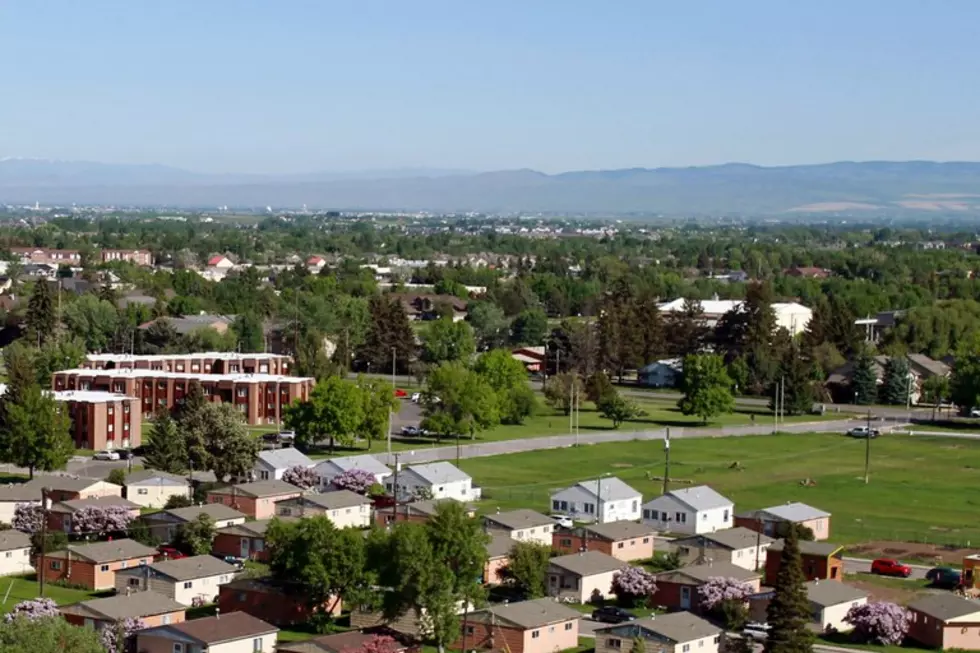
Bozeman’s sole multicultural enclave faces evictions amid housing crisis
In late November, a professor noticed a slow exodus from her neighborhood near downtown Bozeman, on the edge of the campus of Montana State University, where she works. The chipped A-frames on the spruce-dotted streets in MSU’s family and graduate housing were home to custodians, researchers and tenure-track professors at the university, which owns the houses. Now, many of them were packing up and leaving. The university had decided to reallocate their homes to undergraduate students, and they had to be out by June 2021.
The professor and her neighbors faced a twofold loss. First, they would lose affordable housing, already a rarity in a city where the rental vacancy rate is close to 0% and the median price of a single-family house is about half a million dollars. The second — which the professor, who asked not to be named for fear of retaliation, found even more troubling — was the likely dissolution of what she describes as Bozeman’s only racially diverse neighborhood. This is borne out by the demographics of the local elementary school, which is 74% white, compared to the elementary school less than a mile to the east, which is 92% white. (Bozeman’s public elementary schools are, on average, 91% white; the population overall is 92% white.)
The professor was worried about the future of her child, one of the few children of color in this majority-white school district and city. She began to look for job postings outside the state and attending virtual interviews at other universities while still teaching her classes.
Bozeman — one of the nation’s whitest cities — is also one of Montana’s most racially diverse. This diversity stems, in part, from the international students, graduate researchers and faculty that Montana State has attracted to the town. Now, as their housing is re-apportioned, some of those residents and their families must decide whether the price of living in town is worth it.
Some students, including Black Student Union leader Anaya Paschal, think that the evictions might force people of color to leave both the university and Bozeman itself. “Everyone I know who lives in family and graduate housing is a person of color, or in some kind of marginalized group,” she said. “I really think it will be detrimental to the BIPOC community in Bozeman. I don’t know where else they’re going to go.” Paschal, who is currently working with administrators to create an Africana studies major, worries that the evictions might hinder the project. “If (the professors) don’t have somewhere to live, they’d probably rather go to a different university and work there,” she said.
Montana State, one of the city’s largest employers, plays a sizeable role in its economic and population growth. Rising student enrollment — which increased by nearly 20% over the past decade — is evident in the sleek, brand-new dormitory that dwarfs the low-slung homes of the family and graduate housing just a few hundred yards away.
MSU’s vice president of university communications, Tracy Ellig, said that the decision to evict the current residents was not made lightly. Rather, he said, it was made for the benefit of the students, who are the university’s first priority. This ties into MSU’s mission as a land-grant university, which is “to serve the sons and daughters of working families,” he said. MSU relies on student tuition for 72% of its revenue. “The university, when it was making this decision, was only looking at one data point, which is, ‘Are these people employees, or are they students?’ ” Ellig said. “I don’t have the data to know what the racial makeup are of those employees.”
The university’s increased enrollment means that more students and recent graduates are spilling into an already-strained housing market. Bozeman — as a university town, recreation hub and tourist draw — exemplifies the housing crisis that is affecting mountain towns across the West. In 2019, Harvard’s Joint Center for Housing Studies reported that, by a common measure of housing affordability — the ratio of median home price to median household income — homeownership was particularly hard to achieve in parts of the West.
The crunch in Bozeman stems from the combination of a population boom and a short supply of low-income housing, said Megan Lawson, a researcher at the nonprofit Headwaters Economics, something common to cities with steady recreation-dependent economies. The housing crisis predates the pandemic, she said, but the recent influx of remote workers to towns like Bozeman has only exacerbated it.
Between now and June, residents of the university’s family and graduate housing will continue to trickle out of the neighborhood — some to another ZIP code in the city, some to new communities and different states. Others are turning to a local nonprofit, the Human Resource Development Council, for assistance finding affordable apartments. Almost every day, the professor and her neighbors discuss where they might find themselves next. Meanwhile, she’s already decided: If she’s able to land a position elsewhere, she’ll take it.
Surya Milner is an editorial intern at High Country News. Email her at surya.milner@hcn.org or submit a letter to the editor. This story originally appeared online at High Country News on Feb. 11, 2021, and is republished here by permission.
